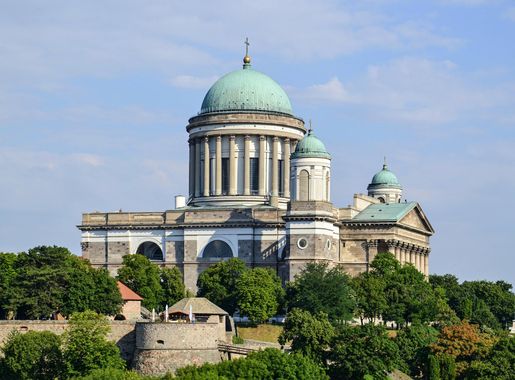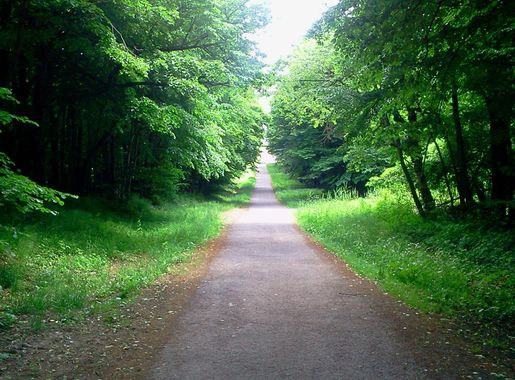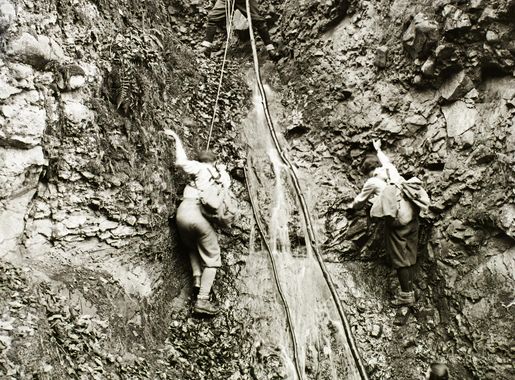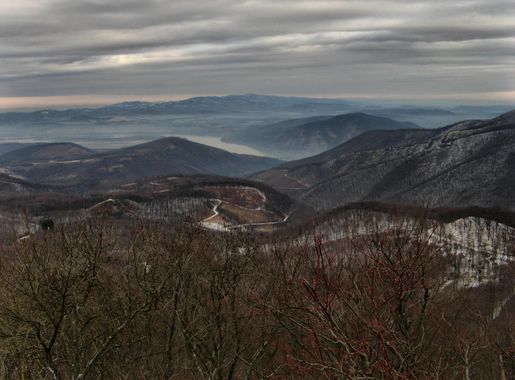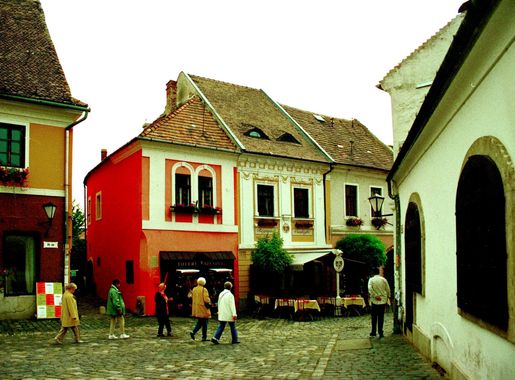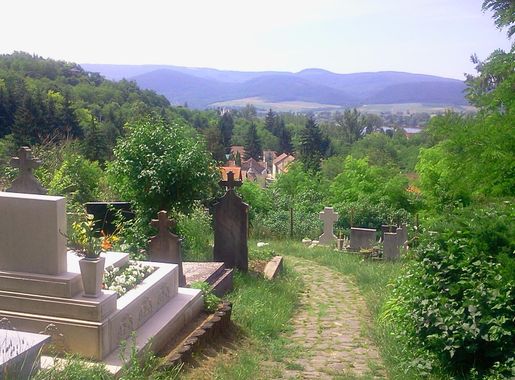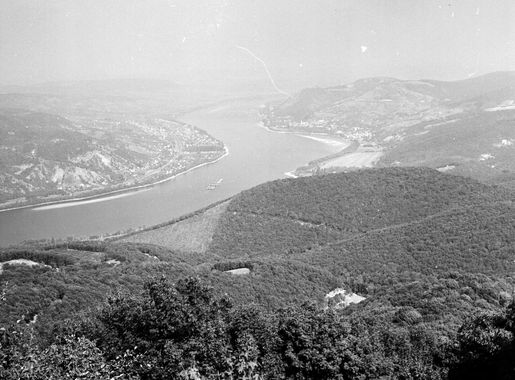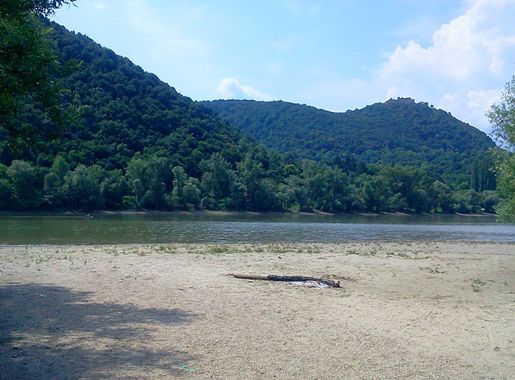
Discover the Serenity of Duna-Ipoly National Park
Explore Duna-Ipoly National Park: Hungary's natural gem with rivers, mountains, rich biodiversity, and historical treasures awaiting your discovery.
Nestled in the heart of Hungary, Duna-Ipoly National Park is a natural haven waiting to be explored. Spanning over 600 square kilometers, this park is a picturesque blend of rivers, mountains, and forests. Whether you are a nature lover, a hiker, or a history enthusiast, Duna-Ipoly offers something for everyone. The park is home to the majestic Danube River and the scenic Ipoly River, which together create a lush landscape filled with diverse flora and fauna. Bird watchers will be thrilled to spot rare species, while photographers will find endless opportunities to capture the beauty of the park's landscapes. Don't miss the chance to explore the Börzsöny and Pilis Mountains, which provide stunning views and challenging hiking trails for adventure seekers. Beyond its natural beauty, Duna-Ipoly National Park is steeped in cultural history. The park encompasses several historical sites, including ancient ruins and medieval castles. One notable highlight is the Visegrád Castle, offering panoramic views of the Danube Bend. Visitors can also explore the charming villages within the park, where traditional Hungarian culture and hospitality await.
Local tips in Duna-Ipoly National Park
- Visit in spring or autumn for the best weather and fewer crowds.
- Bring binoculars for bird watching; many rare species can be spotted here.
- Wear sturdy hiking boots if planning to explore the mountainous trails.
- Carry cash for entry fees and local purchases in the villages.
- Check the park's website for guided tours and educational programs.
Discover the Serenity of Duna-Ipoly National Park
Nestled in the heart of Hungary, Duna-Ipoly National Park is a natural haven waiting to be explored. Spanning over 600 square kilometers, this park is a picturesque blend of rivers, mountains, and forests. Whether you are a nature lover, a hiker, or a history enthusiast, Duna-Ipoly offers something for everyone. The park is home to the majestic Danube River and the scenic Ipoly River, which together create a lush landscape filled with diverse flora and fauna. Bird watchers will be thrilled to spot rare species, while photographers will find endless opportunities to capture the beauty of the park's landscapes. Don't miss the chance to explore the Börzsöny and Pilis Mountains, which provide stunning views and challenging hiking trails for adventure seekers. Beyond its natural beauty, Duna-Ipoly National Park is steeped in cultural history. The park encompasses several historical sites, including ancient ruins and medieval castles. One notable highlight is the Visegrád Castle, offering panoramic views of the Danube Bend. Visitors can also explore the charming villages within the park, where traditional Hungarian culture and hospitality await.
When is the best time to go to Duna-Ipoly National Park?
Iconic landmarks you can’t miss
Shoes on the Danube Bank
Explore the poignant Shoes on the Danube Bank in Budapest, a moving memorial honoring Holocaust victims with breathtaking river views.
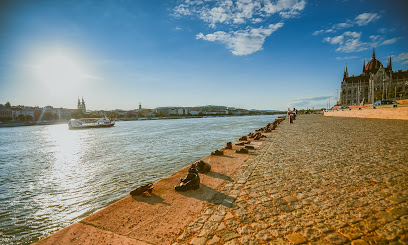
Duna-Ipoly Nemzeti Park
Explore the breathtaking landscapes and rich biodiversity of Duna-Ipoly National Park, a hidden gem just outside Budapest.
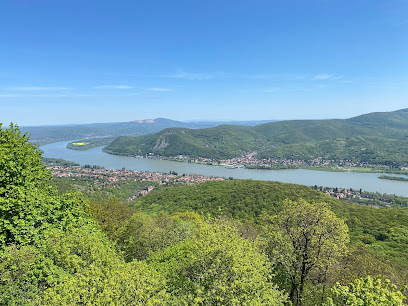
Bükki National Park
Explore Bükk National Park, Hungary's natural wonderland, featuring stunning landscapes, diverse wildlife, and endless outdoor adventures.
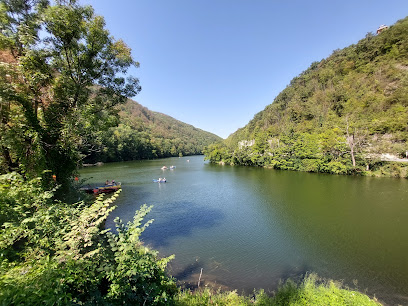
Buda Landscape Protection Area
Explore the scenic beauty of Buda Landscape Protection Area, a peaceful national reserve near Budapest offering stunning views and diverse wildlife.
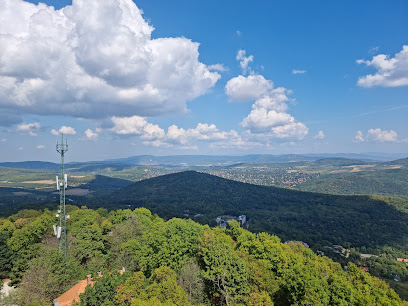
Balaton Uplands National Park
Explore the breathtaking landscapes and rich cultural heritage of Balaton Uplands National Park, a haven for nature lovers and adventure seekers.
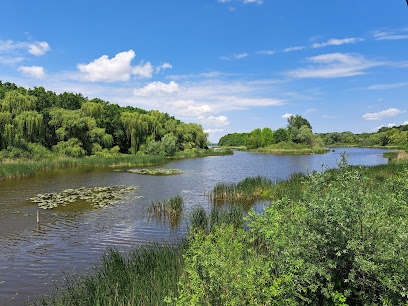
Palvolgyi Cave
Discover the enchanting Palvolgyi Cave in Budapest, a natural wonder filled with fascinating formations and rich geological history.

Duna-Dráva National Park
Discover the serene beauty of Duna-Dráva National Park, a natural paradise in Hungary filled with diverse wildlife and stunning landscapes.
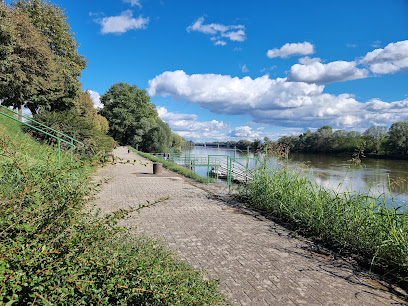
Gerecsei Landscape Protection Area
Unwind in the tranquil beauty of Gerecsei Landscape Protection Area, a national reserve in Tata, Hungary, perfect for nature lovers and outdoor enthusiasts.
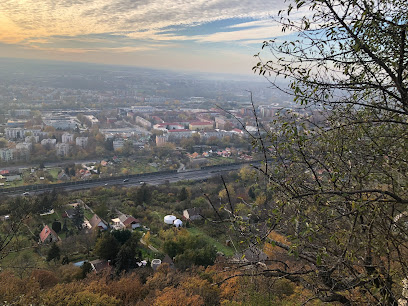
Rám-szakadék
Experience the stunning natural beauty of Rám-szakadék, a premier hiking area near Dömös, known for its breathtaking views and serene trails.

Királyréti Educational Trail
Discover the breathtaking Királyréti Educational Trail in Szokolya, a perfect blend of adventure and education in Hungary's stunning natural landscapes.

Spartacus hiking trail
Discover the breathtaking Spartacus Hiking Trail in Visegrád, where nature meets history in a stunning outdoor adventure.
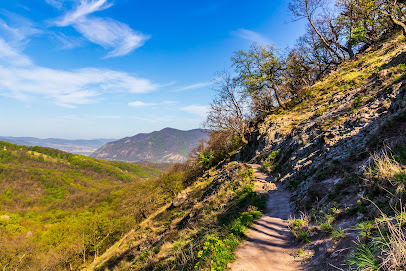
Lynx House and Visitor Center
Explore the Lynx House and Visitor Center in Szokolya, Hungary – a hub of wildlife education and eco-tourism in a stunning natural setting.
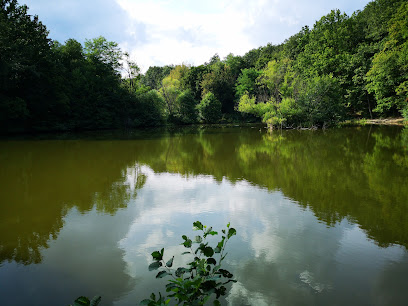
Duna-Ipoly National Park Directorate
Discover the breathtaking landscapes and rich biodiversity of Duna-Ipoly National Park, a must-visit destination for nature lovers in Hungary.
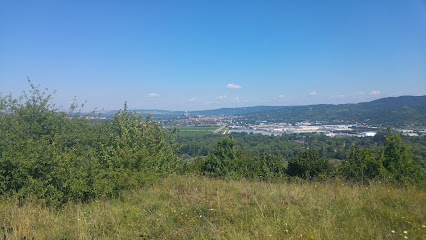
Danube-Ipoly National Park
Discover the breathtaking landscapes and rich biodiversity of Danube-Ipoly National Park, a must-visit destination for nature lovers in Hungary.
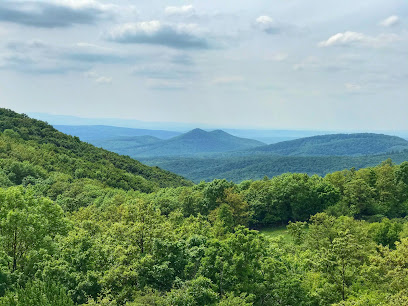
Vár-barlangi séták (Budai Vár-barlang)
Discover the Buda Cave: an underground adventure in Budapest, showcasing stunning geological formations and rich historical tales.
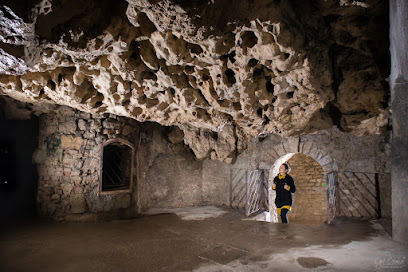
Unmissable attractions to see
City Park
Explore the lush beauty and cultural treasures of City Park in Budapest, a tranquil oasis in the heart of the city.
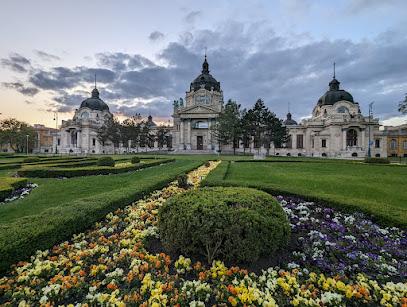
IKONO Budapest
Discover the unique blend of art and technology at IKONO Budapest, where memories come alive through immersive experiences.

House of Music Hungary
Experience the magic of music at the House of Music Hungary, a cultural center in Budapest featuring captivating exhibits and live performances.
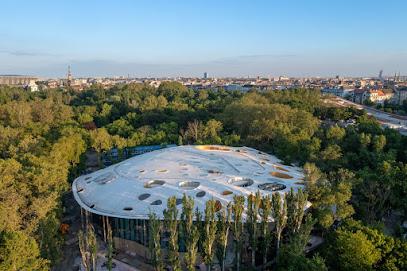
Bükki National Park
Explore the breathtaking landscapes, rich wildlife, and cultural heritage of Bükk National Park in Hungary, a true haven for nature lovers and adventure seekers.
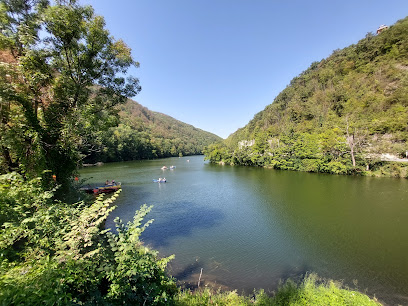
Balaton Uplands National Park
Explore the breathtaking landscapes and rich wildlife of Balaton Uplands National Park, a natural wonder near Lake Balaton, Hungary.
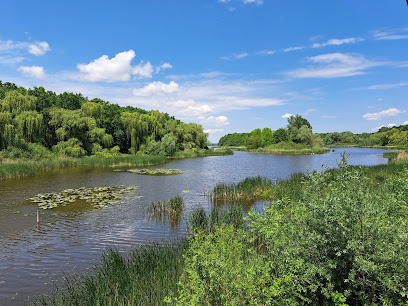
Hortobágyi National Park
Explore the vast serenity of Hortobágyi National Park, Hungary's largest grassland, rich in wildlife and traditional pastoral culture.
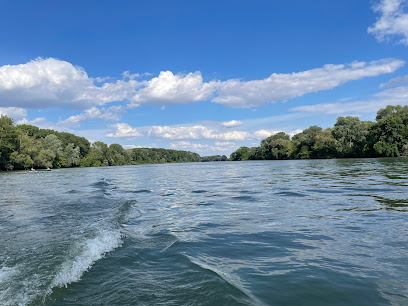
Alcsúti Arboretum Nature Reserves
Discover the serene beauty of Alcsúti Arboretum, a tranquil escape in Hungary with diverse trees, picturesque lakes, and peaceful walking paths.
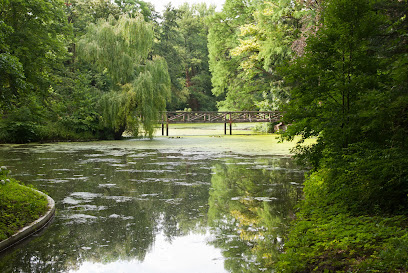
Labyrinth
Unravel the secrets of Budapest's underground Labyrinth, a captivating museum showcasing the city's hidden history and enchanting tales.

Silverline Cruises kft.
Explore Budapest's breathtaking sights and indulge in local cuisine aboard Silverline Cruises on the Danube River.
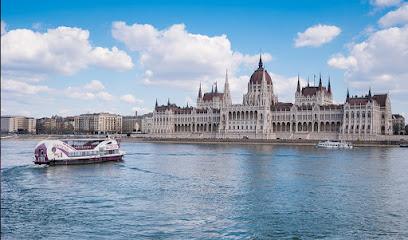
Museum of Ethnography
Explore the diverse cultures and rich traditions of Hungary at the Museum of Ethnography, a must-visit for history and culture enthusiasts.

Aggtelek National Park
Explore the breathtaking landscapes and rich biodiversity of Aggtelek National Park, a UNESCO World Heritage site in Hungary, perfect for adventurers and nature lovers.
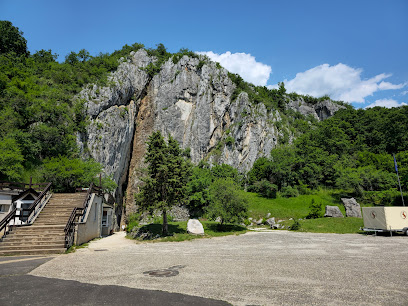
Károlyi Garden
Discover Károlyi Garden, Budapest's hidden gem, a lush oasis perfect for relaxation amidst the city's vibrant energy.
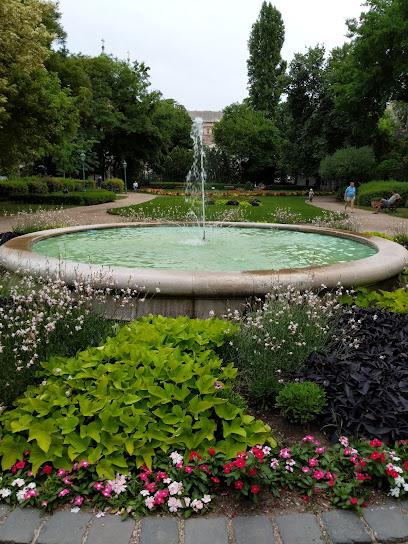
Dera Gorge
Explore the breathtaking beauty of Dera Gorge, a must-visit hiking area in Csobánka, where nature meets adventure in stunning landscapes.
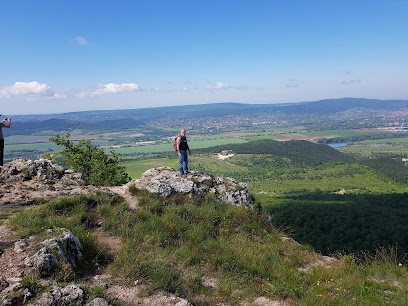
Őrség National Park
Explore the breathtaking beauty and diverse wildlife of Őrség National Park, a serene escape into nature in Hungary.
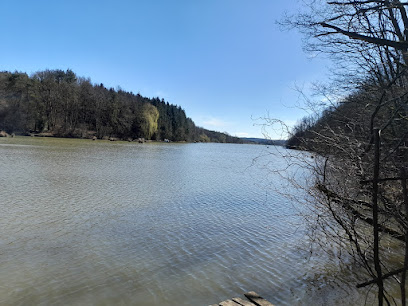
Lake Naplás
Explore the tranquil beauty of Lake Naplás in Budapest, a nature preserve perfect for picnics, birdwatching, and enjoying serene landscapes.
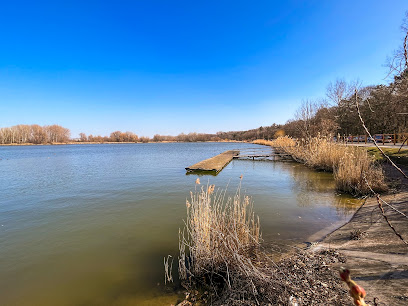
Essential places to dine
Hungarikum Bisztró
Discover authentic Hungarian cuisine at Hungarikum Bisztró in Budapest – A culinary delight that embodies tradition and flavor.

Trófea Grill Restaurant Óbuda
Experience the rich flavors of Hungary at Trófea Grill Restaurant Óbuda—your go-to buffet destination in Budapest.
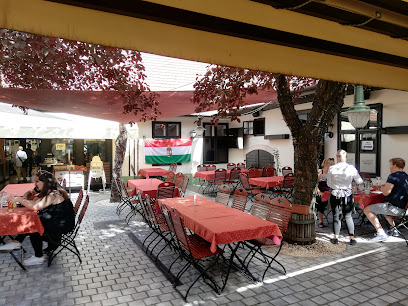
Csalánosi Csárda Óbuda
Discover the essence of Hungarian cuisine at Csalánosi Csárda Óbuda - where tradition meets flavor in every dish.
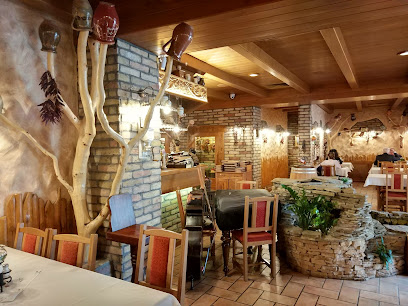
Kéhli Vendéglő
Experience authentic Hungarian flavors at Kéhli Vendéglő, where tradition meets culinary excellence in the heart of Budapest.
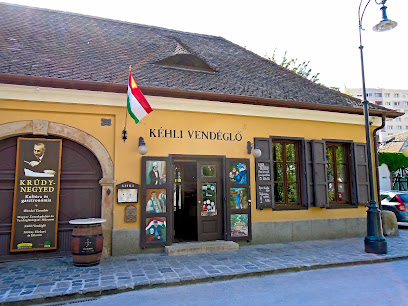
Retek Bisztro
Discover Retek Bisztro in Budapest - where traditional Hungarian cuisine meets modern flair in a cozy bistro setting.
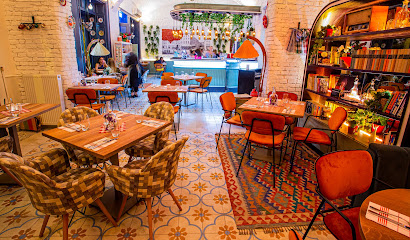
Lánchíd Söröző
Savor authentic Hungarian flavors at Lánchíd Söröző in Budapest - where tradition meets taste.
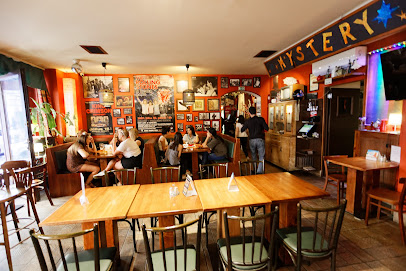
Mazi Greek Kitchen
Experience authentic Greek flavors at Mazi Greek Kitchen in Budapest—where Mediterranean cuisine meets vibrant hospitality.
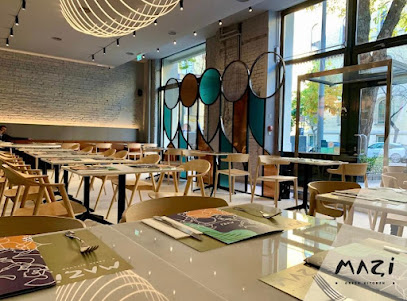
Belgian Brasserie Henri
Experience authentic Belgian flavors at Belgian Brasserie Henri in Budapest with stunning views and an extensive beer selection.

Robinson Restaurant
Experience exquisite Mediterranean cuisine with stunning lakeside views at Robinson Restaurant in Budapest.
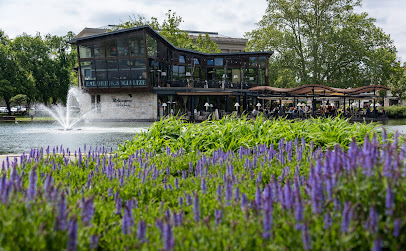
Taiwan Restaurant
Experience the essence of authentic Chinese cuisine at Taiwan Restaurant in Budapest – where every dish tells a story.
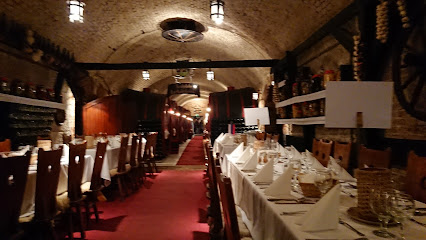
Flour Style Wok Bar
Experience authentic Asian flavors at Flour Style Wok Bar in Budapest - where every dish tells a story.
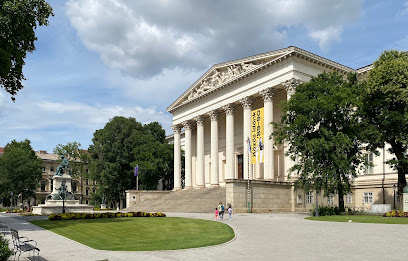
Párisi Passage Restaurant
Experience exquisite Hungarian cuisine in an elegant setting at Párisi Passage Restaurant - where tradition meets innovation.
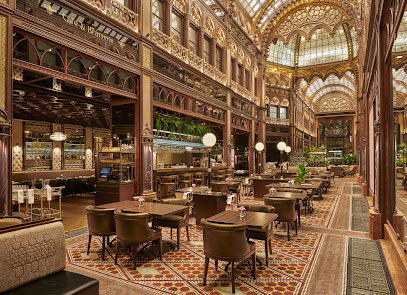
Amici Miei
Experience authentic Italian flavors at Amici Miei in Budapest, where each dish tells a story of tradition and passion.
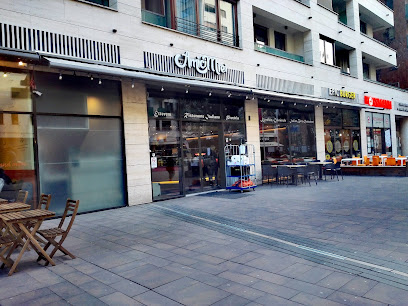
Leo Rooftop Budapest
Discover luxury dining at Leo Rooftop Budapest – where modern European cuisine meets stunning skyline views.
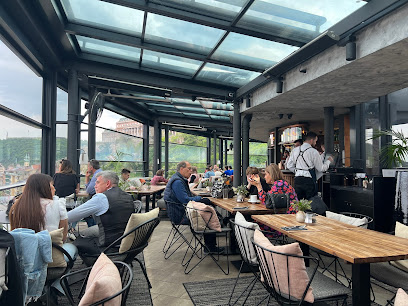
Városliget Café
Discover culinary delights at Városliget Café in Budapest's City Park—where local flavors meet stunning natural beauty.
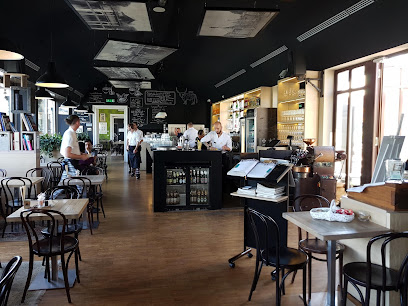
Markets, malls and hidden boutiques
Duna-Ipoly Nemzeti Park
Explore the breathtaking landscapes and diverse wildlife of Duna-Ipoly National Park, a natural paradise near Budapest for outdoor enthusiasts and nature lovers.
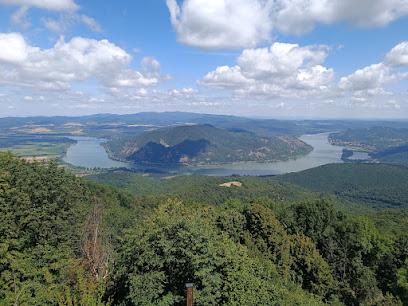
Hilda Cukrászda
Discover Hilda Cukrászda in Pilisszentkereszt, the ultimate destination for dessert lovers seeking sweet treats and frozen yogurt delights.
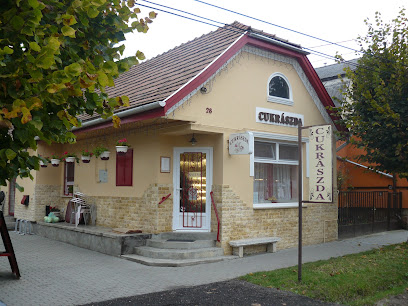
Lynx House and Visitor Center
Explore the wonders of nature at Lynx House and Visitor Center in Szokolya, where education meets the beauty of Hungary's wildlife.
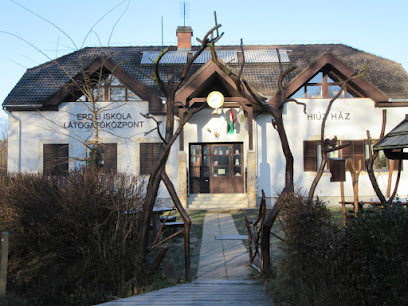
Apátkúti Vadászház Étterem és Fogadó
Experience the serene beauty and culinary delights at Apátkúti Vadászház, where nature meets exceptional dining in the heart of Visegrád.
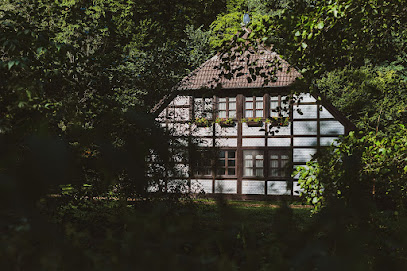
Duna-Ipoly National Park Directorate
Explore the breathtaking landscapes and rich biodiversity of Duna-Ipoly National Park, a perfect getaway for nature lovers and adventure seekers.
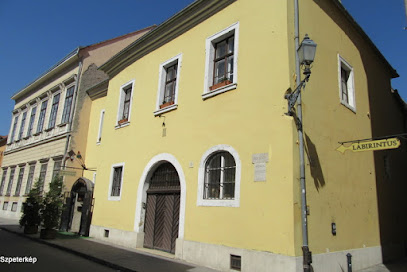
Danube-Ipoly National Park
Discover the enchanting landscapes and diverse wildlife of Danube-Ipoly National Park, a hidden gem in Hungary's natural heritage.
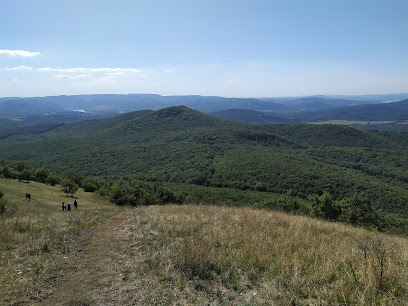
Super Coop
Explore Super Coop in Pilisszentkereszt: Your local general store for fresh produce, local delicacies, and everyday essentials.
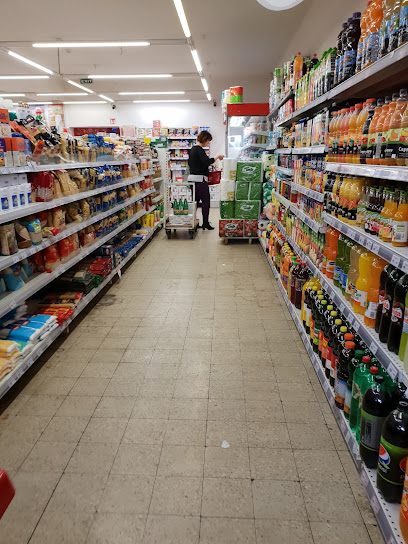
BEN-KEL KFT.
Explore BEN-KEL KFT. in Pilisszentlászló, a charming fireplace store offering quality designs and expert advice for your home.
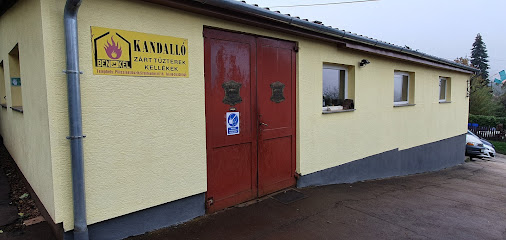
La Raza HOME & CAFE Lakberendezés
Explore La Raza HOME & CAFE in Pilisvörösvár for unique gifts, local crafts, and delightful coffee in a cozy atmosphere.
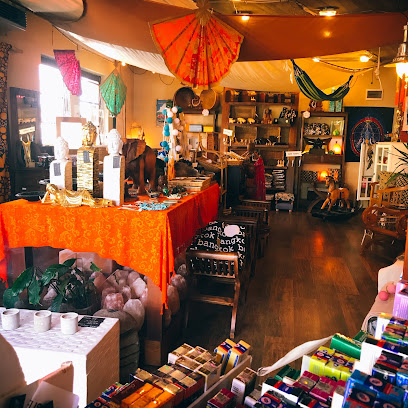
Eldorádo Butik
Discover unique fashion at Eldorádo Butik in Örkény, where local style meets warm hospitality for an unforgettable shopping experience.
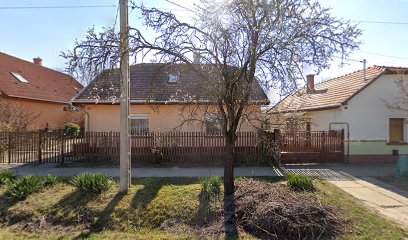
Szíved Háza
Discover unique Hungarian gifts at Szíved Háza, where craftsmanship meets creativity in a delightful shopping experience.

Peti pláza zöldség-gyümölcs kisbolt
Experience the freshest local produce and authentic Hungarian flavors at Peti Pláza, your go-to grocery store in Pilisszántó.
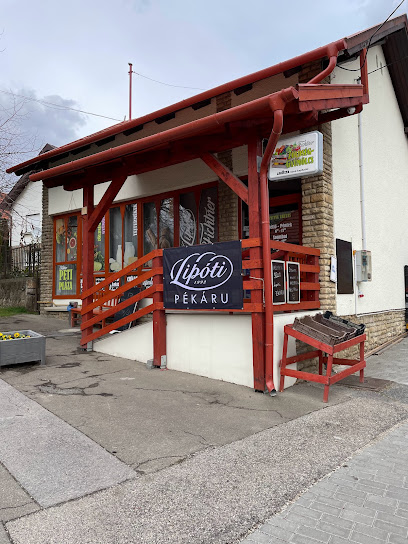
Aranykorona Gyógyszertár -- Bartal Galéria
Experience the charm of Nagymaros at Aranykorona Gyógyszertár, where health meets local artistry in a unique cultural pharmacy.
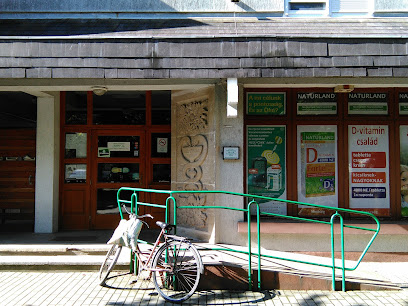
Hesztia Lakás Varázs
Explore Hesztia Lakás Varázs in Nagymaros, a treasure trove for unique gifts and local crafts that embody Hungarian culture.
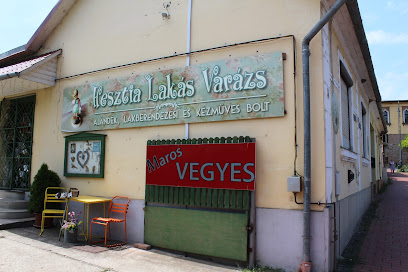
NANDU Online Áruház - Babahordozó és gyerekhordozó a Gyártótól
Explore Nandu Online Áruház for top-quality baby carriers and accessories, perfect for parents seeking comfort and style on the go.

Essential bars & hidden hideouts
Szimpla Kert
Discover Szimpla Kert, Budapest's iconic ruin pub blending culture, nightlife, and local flavors in a vibrant and eclectic atmosphere.
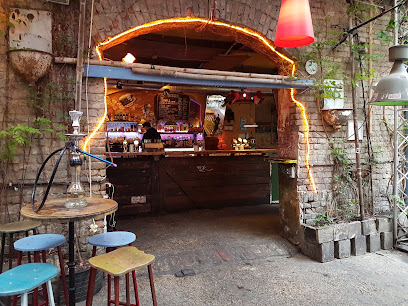
Instant-Fogas Complex
Experience Budapest's vibrant nightlife at Instant-Fogas Complex, a unique blend of nightclub, bar, and grill, perfect for unforgettable nights out.
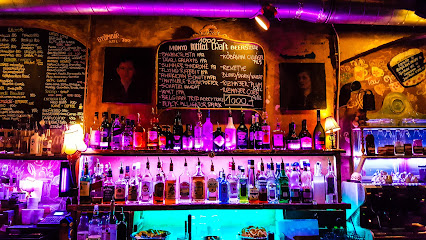
Duna-Ipoly Nemzeti Park
Discover the enchanting landscapes and rich biodiversity of Duna-Ipoly National Park, a serene escape near Budapest, perfect for hiking and nature exploration.
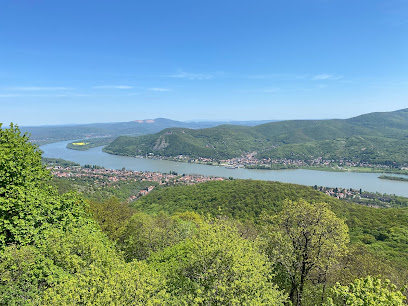
Ruin Bars Budapest
Discover the eclectic charm of Ruin Bars in Budapest, where history meets vibrant nightlife in a unique and artistic setting.
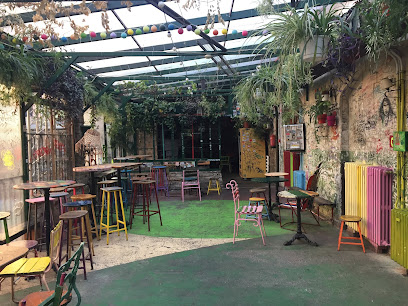
Púder Bárszínház
Experience the vibrant fusion of dining, theater, and nightlife at Púder Bárszínház, a cultural gem in Budapest.
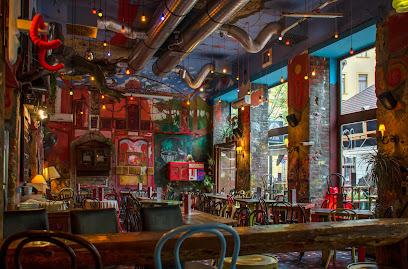
Csendes Létterem - Vintage Bar & Café
Experience the vintage charm of Csendes Létterem, a unique bar and café in Budapest, where great coffee, cocktails, and nightlife come together.
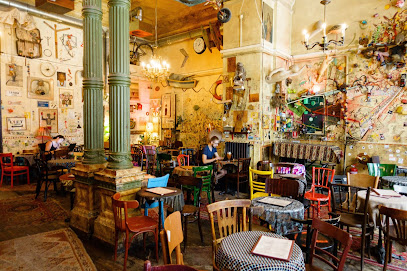
Szatyor Bár
Immerse yourself in Budapest's local culture at Szatyor Bár, where vibrant atmosphere meets exceptional drinks and culinary delights.
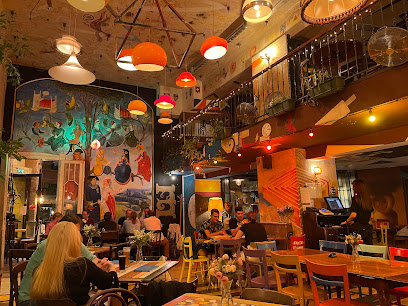
Kisüzem
Discover the vibrant nightlife of Budapest at Kisüzem, a charming pub offering a delightful atmosphere, delicious food, and exceptional drinks.
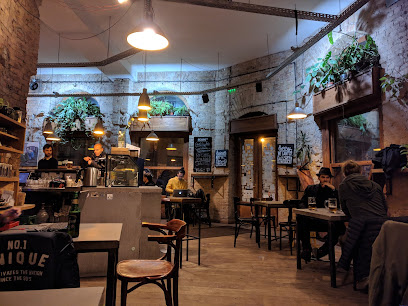
High Note SkyBar
Experience Budapest's breathtaking views and sophisticated cocktails at High Note SkyBar, the ultimate destination for an unforgettable night out.
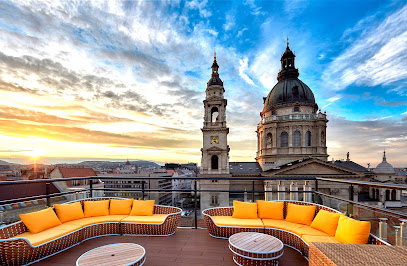
Pótkulcs
Experience the eclectic charm and vibrant nightlife at Pótkulcs, Budapest's must-visit pub for live music and affordable drinks.
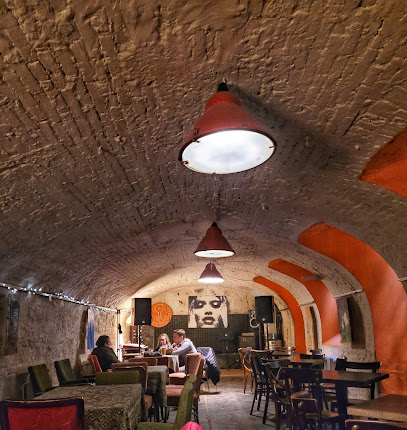
The Grund
Experience the vibrant culture of Budapest at The Grund, where fun, learning, and relaxation come together in an unforgettable setting.
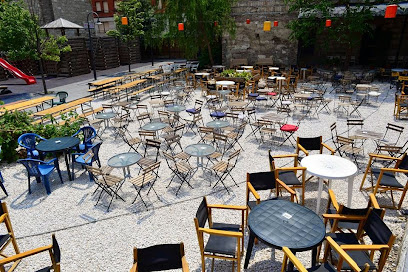
Doboz
Discover the eclectic nightlife at Doboz, where art meets music in the heart of Budapest's vibrant District VII.
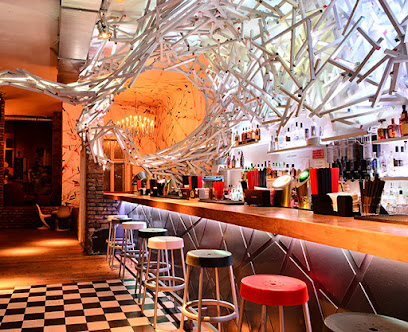
GoodSpirit Whisky & Cocktail Bar
Explore a world of flavors at GoodSpirit Whisky & Cocktail Bar, Budapest's premier destination for whisky and crafted cocktails.
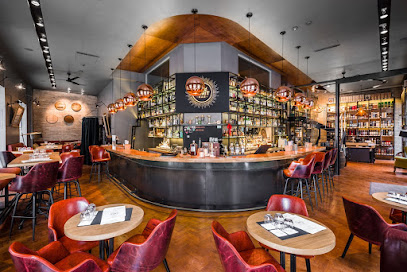
Warm Up Cocktail bar
Discover the art of cocktail creation at Warm Up Cocktail Bar in Budapest, a vibrant hotspot for mixology enthusiasts seeking unique flavors.

Red Ruin
Discover the eccentric charm of Red Ruin, a communist-themed bar in Budapest, offering a vibrant atmosphere and diverse drink selection.
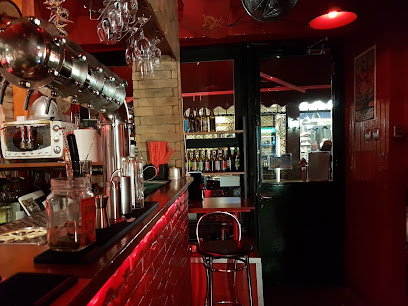
Local Phrases about Duna-Ipoly National Park
-
- HelloSzia
[see-ah] - GoodbyeViszontlátásra
[vee-sont-la-tash-ra] - YesIgen
[ee-gen] - NoNem
[nem] - Please/You're welcomeKérem
[kay-rem] - Thank youKöszönöm
[kur-suh-nurm] - Excuse me/SorryElnézést
[el-nay-zayst] - How are you?Hogy vagy?
[hoj vaj] - Fine. And you?Jól vagyok. És te?
[yol vaj-ock. ays teh] - Do you speak English?Beszélsz angolul?
[bes-aylss on-go-lull] - I don't understandNem értem
[nem air-tem]
- HelloSzia
-
- I'd like to see the menu, pleaseSzeretnék látni az étlapot, kérem
[seh-reh-tnek laht-nee ahs ate-loh-pot, kay-rem] - I don't eat meatNem eszem húst
[nem es-em hoo-sht] - Cheers!Egészségedre!
[eh-gay-shayg-eh-dreh] - I would like to pay, pleaseSzeretnék fizetni, kérem
[seh-reh-tnek fee-zeht-nee, kay-rem]
- I'd like to see the menu, pleaseSzeretnék látni az étlapot, kérem
-
- Help!Segítség!
[sheh-geet-sayg] - Go away!Menj el!
[men yel] - Call the Police!Hívd a rendőrséget!
[heed ah ren-dur-say-get] - Call a doctor!Hívd az orvost!
[heed ahz or-vosh-t] - I'm lostElvesztem
[el-veh-stem] - I'm illBeteg vagyok
[beh-teg vaj-ock]
- Help!Segítség!
-
- I'd like to buy...Szeretnék vásárolni...
[seh-reh-tnek vah-shah-rohl-nee] - I'm just lookingCsak nézelődöm
[chahk nay-zeh-loh-dohm] - How much is it?Mennyibe kerül?
[men-yee-beh keh-rool] - That's too expensiveEz túl drága
[ehz tool drah-gah] - Can you lower the price?Le tudnád engedni az árat?
[leh too-dnahd eng-ehd-nee ahs ah-raht]
- I'd like to buy...Szeretnék vásárolni...
-
- What time is it?Mennyi az idő?
[men-nyee ahz ee-doh] - It's one o'clockEgy óra van
[edj oh-rah vahn] - Half past (10)Fél 10
[fayl tiz] - MorningReggel
[rehg-gel] - AfternoonDélután
[deh-loo-tahn] - EveningEste
[ehs-teh] - YesterdayTegnap
[teg-nahp] - TodayMa
[mah] - TomorrowHolnap
[hol-nahp] - 1Egy
[edj] - 2Kettő
[ket-toh] - 3Három
[hah-rom] - 4Négy
[naydg] - 5Öt
[oht] - 6Hat
[haht] - 7Hét
[hayt] - 8Nyolc
[nyolts] - 9Kilenc
[keel-ents] - 10Tíz
[teedz]
- What time is it?Mennyi az idő?
-
- Where's a/the...?Hol van a...
[hol vahn ah] - What's the address?Mi a cím?
[mee ah seem] - Can you show me (on the map)?Meg tudnád mutatni (a térképen)?
[mehg too-dnahd moo-taht-nee ah tair-kay-pen] - When's the next (bus)?Mikor jön a következő (busz)?
[mee-kor yern ah koh-veht-keh-zoh boos] - A ticket (to ....)Egy jegy (.... felé)
[edj yedj .... feh-lay]
- Where's a/the...?Hol van a...
History of Duna-Ipoly National Park
-
The region that encompasses Duna-Ipoly National Park has been inhabited since prehistoric times. Archaeological evidence indicates that early human settlements existed along the banks of the Danube River and in the surrounding hills. Excavated artifacts such as pottery, tools, and remnants of dwellings provide a glimpse into the lives of these early inhabitants.
-
During the first century AD, the Roman Empire expanded into the territory that now includes Duna-Ipoly National Park. The Romans established military camps and settlements along the Danube, including the construction of fortifications like the remains of the Roman fort at Visegrád. This period saw the development of infrastructure such as roads and bridges, facilitating trade and communication across the empire.
-
The Middle Ages brought the construction of numerous castles and fortresses in the region, many of which still stand today. Notable examples include Visegrád Castle, which served as a royal residence and strategic military stronghold. These fortifications played crucial roles during various conflicts, including the Mongol invasions of the 13th century and the Ottoman wars in the 16th and 17th centuries.
-
The Ottoman Empire's expansion into Hungary in the 16th century left a lasting impact on the region. The area around Duna-Ipoly National Park was frequently contested, with many castles and towns changing hands multiple times. The Ottoman influence is evident in the architectural and cultural remnants found throughout the park, including the ruins of fortresses and watchtowers.
-
Following the defeat of the Ottomans, the Habsburg Monarchy gained control of Hungary in the late 17th century. This era brought relative stability and the reconstruction of many damaged medieval structures. The Habsburgs initiated various development projects, including the establishment of royal hunting grounds and the construction of Baroque-style buildings, some of which can still be admired in the park today.
-
The 19th century was marked by a growing sense of Hungarian nationalism, which influenced cultural and political movements throughout the country. The region around Duna-Ipoly National Park played a role in the Hungarian Revolution of 1848, a struggle for independence from Habsburg rule. Monuments and memorials dedicated to this period can be found within the park, commemorating the efforts of those who fought for Hungary's national identity.
-
Duna-Ipoly National Park was officially established in 1997, bringing together a diverse landscape that includes the Danube River, the Börzsöny and Pilis mountain ranges, and various natural habitats. The park was created to protect the region's unique flora and fauna, as well as its rich cultural heritage. Today, the park serves as a haven for biodiversity and a destination for those seeking to explore Hungary's natural and historical treasures.
Duna-Ipoly National Park Essentials
-
Duna-Ipoly National Park is located in northern Hungary, spanning parts of Budapest, Pest, and Komárom-Esztergom counties. The most convenient way to reach the park is by flying into Budapest Ferenc Liszt International Airport (BUD). From there, you can rent a car or take public transportation to the park. By car, the park is approximately a 45-minute drive from Budapest. Alternatively, you can take a train or bus from Budapest to nearby towns such as Esztergom, Visegrád, or Nagymaros, which serve as gateways to the park.
-
Within Duna-Ipoly National Park, the best way to explore is by hiking or cycling, as many of its attractions are accessible via well-marked trails. For longer distances, renting a car is a convenient option to visit various parts of the park at your own pace. Public transportation is also available; local buses and trains connect the surrounding towns. In some areas, riverboat services operate on the Danube River, offering a scenic way to travel between towns like Visegrád and Esztergom.
-
The official currency in Hungary is the Hungarian Forint (HUF). Credit cards are widely accepted in most hotels, restaurants, and larger shops within the park's vicinity. However, it is advisable to carry some cash, especially when visiting smaller villages or remote areas where card payments may not be accepted. ATMs are available in the major towns around the park, so it is relatively easy to withdraw cash if needed.
-
Duna-Ipoly National Park is generally a safe destination for tourists. However, it is wise to take standard precautions such as not leaving valuables unattended and being aware of your surroundings. The park itself does not have high-crime areas targeting tourists, but in larger towns and cities, it is advisable to avoid poorly lit areas at night and be cautious in crowded places to avoid pickpocketing.
-
In case of emergency, dial 112 for immediate assistance, which is the general emergency number in Hungary. The nearest medical facilities are located in the surrounding towns like Esztergom and Visegrád. It is recommended to have travel insurance that covers medical emergencies. For minor health issues, there are pharmacies in these towns where you can purchase over-the-counter medications.
-
Fashion: Do wear comfortable and weather-appropriate clothing, especially for outdoor activities. Avoid overly revealing outfits when visiting small villages or religious sites. Religion: Do respect local customs and traditions; always act respectfully when visiting churches and historic sites. Public Transport: Do validate your ticket when using public transport. Don’t eat or drink on public transport. Greetings: Do greet people with a friendly 'hello' or 'jó napot' (good day). A handshake is a common form of greeting. Eating & Drinking: Do try local Hungarian dishes and be open to culinary experiences. Don’t refuse food or drinks offered by locals, as it may be considered impolite.
-
To experience Duna-Ipoly National Park like a local, visit during the shoulder seasons (spring and autumn) when the weather is pleasant, and the park is less crowded. Take part in local festivals and events, such as the Visegrád International Palace Games, to immerse yourself in the culture. Engage with locals who are often eager to share stories about the region's history and traditions. Don’t miss the opportunity to hike the Rám-szakadék gorge or take a boat ride on the Danube for a unique perspective of the landscape.
Trending Landmarks in Duna-Ipoly National Park
-
Shoes on the Danube Bank
-
Duna-Ipoly Nemzeti Park
-
Bükki National Park
-
Buda Landscape Protection Area
-
Balaton Uplands National Park
-
Palvolgyi Cave
-
Duna-Dráva National Park
-
Gerecsei Landscape Protection Area
-
Rám-szakadék
-
Királyréti Educational Trail
-
Spartacus hiking trail
-
Lynx House and Visitor Center
-
Duna-Ipoly National Park Directorate
-
Danube-Ipoly National Park
-
Vár-barlangi séták (Budai Vár-barlang)
Nearby Cities to Duna-Ipoly National Park
-
Things To Do in Budapest
-
Things To Do in Tatabanya
-
Things To Do in Szekesfehervar
-
Things To Do in Salgotarjan
-
Things To Do in Gyor
-
Things To Do in Veszprem
-
Things To Do in Kecskemet
-
Things To Do in Eger
-
Things To Do in Banská Bystrica
-
Things To Do in Trnava
-
Things To Do in Bratislava
-
Things To Do in Trenčín
-
Things To Do in Miskolc
-
Things To Do in Martin
-
Things To Do in Keszthely


